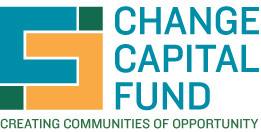What Makes an Effective Philanthropic Collaborative? Change Capital Fund Turns 20-Years-Old
 Change Capital Fund, gearing up for its 20th year, has proven to be an unusually effective philanthropic collaborative. The Association for Neighborhood & Housing Development (ANHD) has long believed that philanthropy – both by banks and private foundations – should focus much of their giving at the local level to neighborhood-based organizations that are effectively addressing problems and building grassroots capacity for greater change. We also believe that sometimes philanthropy should have a strategic theory of how targeted funding can have a larger impact beyond any individual grant. On this 20th anniversary of the fund, here are some of the lessons learned and best practices ANHD has observed that have helped Change Capital to work this well for so long:
Change Capital Fund, gearing up for its 20th year, has proven to be an unusually effective philanthropic collaborative. The Association for Neighborhood & Housing Development (ANHD) has long believed that philanthropy – both by banks and private foundations – should focus much of their giving at the local level to neighborhood-based organizations that are effectively addressing problems and building grassroots capacity for greater change. We also believe that sometimes philanthropy should have a strategic theory of how targeted funding can have a larger impact beyond any individual grant. On this 20th anniversary of the fund, here are some of the lessons learned and best practices ANHD has observed that have helped Change Capital to work this well for so long:
Have a theory of change that adds up to more than the sum of the grants:
Change Capital Fund began 20 years ago as the Neighborhood 2000 Fund, which then evolved to become the Neighborhood Opportunities Fund, which then evolved again into Change Capital. The names don’t matter, but the strategy each time did. Each iteration reflected a change in strategy based on key needs at that moment, but it always kept its focus on local, community-based organizations. The Fund originally came together with the strategic purpose of helping non-profit affordable housing developers adjust to the changing landscape of development by providing deep and multi-year capacity-building funding. This was an especially timely and important need, which the core funders recognized as they had been long-time backers of community development organizations.
With the original strategy showing significant results, the Fund evaluated the landscape to see where they could expand their reach. They had long recognized that the grassroots capacity of the New York City community development movement has always been one of the key strengths of our local approach, and so began a high-impact focus on increasing the capacity of local groups to build and sustain neighborhood-level grassroots organizing. Individually, and collectively, the groups funded by this initiative achieved local and citywide policies that continue to benefit low-income and immigrant New Yorkers. Change Capital Fund is the most recent evolution, continuing the strategy of building core capacities of essential neighborhood institutions, but this time with a focus on helping a smaller number of solid organizations take the next step in impact by strengthening organizational systems, innovating their programming, and increasing their capacity to track and capture outcome- and impact-oriented program data.
There have been a few consistent strengths in the success of each Fund incarnation:
- There was a funder-driven strategy, but strategy was developed in close collaboration with and based on a deep knowledge of the community development movement.
- The funding was given enough time to have a real impact – each Fund incarnation had two multi-year cycles, which allowed true capacity growth to take place in each of the funded organizations, and often led to changes in practices that the sector as a whole can implement.
Create an important, strategic space that welcomes all types of funders to collaborate:
The level of resources matter. Grants have to be substantial enough to allow the funded group to bring on additional staff, with a funding cycle that is long enough to allow the funding to have an impact on the group’s work and with enough cycles to allow the change in practices to take root and flourish. This level of commitment is essential, but it is generally the case that it takes more than one foundation to provide that level of resources. A key strength of each of the three iterations of the Fund is that the collaborative included a range of foundation types, from banks to community foundations to larger-scale foundations. The depth of knowledge and diversity of the funders allowed the Fund to become an important center of gravity in the field. New York has more foundations of all types than most cities, but an effort of the scale and ambition of any of the three funding iterations would be hard to sustain, even here, without the commitment of different philanthropic sectors held together by a shared strategic vision.
Evolve to meet new circumstances and challenges while keeping core supporters at the table:
Foundations always have competing areas of interest and focus, and sustaining a commitment for the long term is not easy. The remarkable durability of the Fund comes, in part, from the active interest of the core supporters in evolving their strategy as the lessons of each funding cycle are evaluated and absorbed. Over the past 20 years, this has kept each iteration of the Fund strategically and urgently focused on a key challenge of the moment. Also, the openness to collective evaluation with all the funders around the table has helped to keep the Fund an important center of gravity for supporters of the highest level of community development practice.
ANHD congratulates Change Capital Fund for its 20 years of important impact and looks forward to learning more lessons about effective collaborative philanthropy as the Fund continues to grow and evolve to meet its mission.
Benjamin Dulchin, ANHD’s Executive Director
 ANHD 2016 Building the Community Development Movement
ANHD 2016 Building the Community Development Movement

